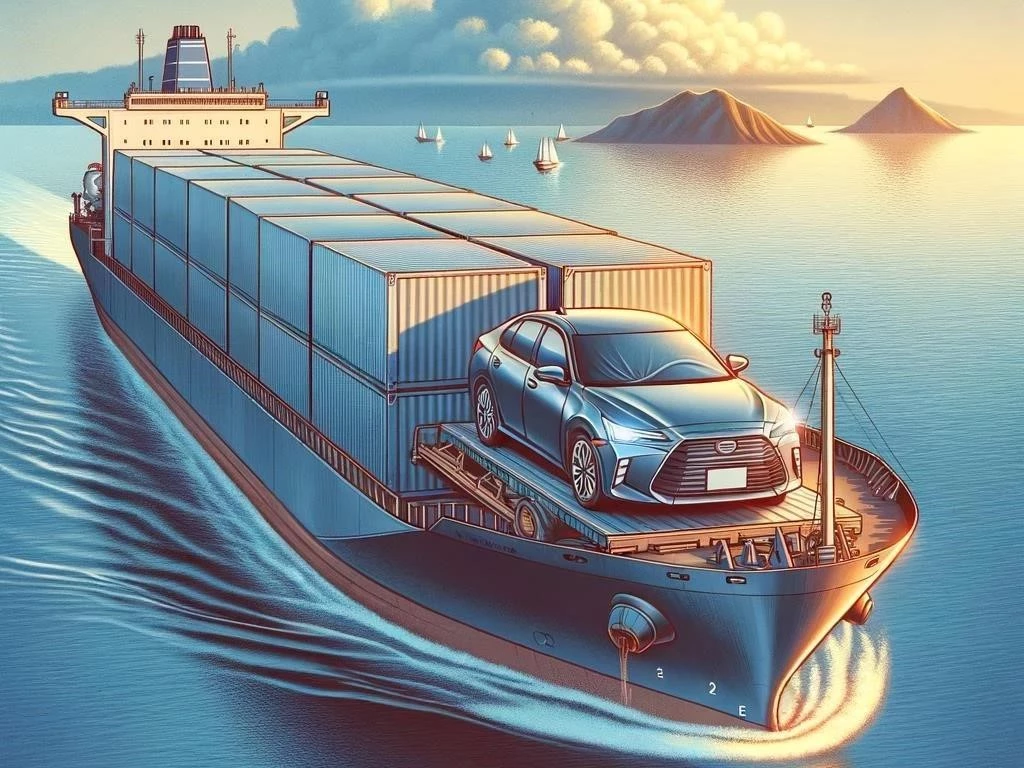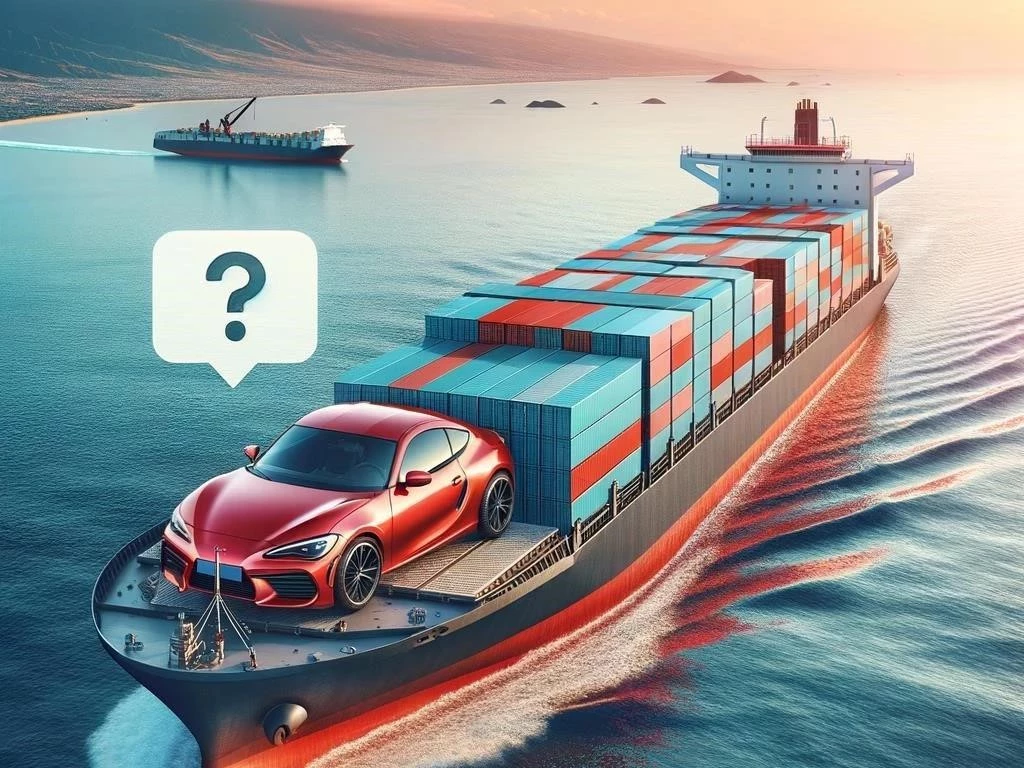How Much Does It Cost to Ship a Car to Hawaii?
Shipping costs vary significantly based on factors like distance, vehicle size, and chosen shipping methods. Always request multiple shipping quotes for accurate comparisons.
Hawaii car shipping presents unique challenges and considerations. Understanding the logistics involved is essential for effective vehicle relocation and managing costs throughout the process.
1.1 Overview of Car Transport to Hawaii
Transporting a vehicle to Hawaii involves several logistical considerations. The process typically requires utilizing maritime shipping methods, which can influence overall shipping costs. Car transport to Hawaii may be executed through container shipping or roll-on/roll-off services, each presenting different vehicle shipping rates. Factors such as distance, vehicle size, and shipping methods play a significant role in determining costs. Additionally, it is essential to factor in port fees and insurance costs, which can vary among different shipping companies. Planning and understanding these elements will help ensure a smooth car relocation experience. Always gather multiple shipping quotes to identify the most cost-effective auto transport options tailored to your needs.
1.2 Importance of Understanding Shipping Costs
Understanding shipping costs is crucial when relocating a vehicle to Hawaii. Accurate knowledge enables you to budget effectively, avoiding unexpected expenses during the shipping process. Various factors, including distance, vehicle size, and shipping methods, can significantly influence overall costs. By comprehensively analyzing shipping quotes from different companies, you can identify the most economical options, ensuring you receive quality auto shipping services without overspending. Furthermore, being aware of additional fees such as port fees and insurance costs will help you make informed decisions. Ultimately, understanding shipping costs will lead to a smoother car transport experience, allowing for better planning and minimizing potential financial surprises during the relocation process.
Factors Influencing Shipping Costs
Several factors influence shipping costs for vehicles to Hawaii, including distance, vehicle size and weight, shipping methods, timing, and additional insurance costs to consider.
2.1 Distance and Shipping Method
The distance from the mainland United States to Hawaii significantly affects shipping costs. Longer distances generally result in higher freight charges due to increased fuel consumption and operational costs for shipping companies. Additionally, the chosen shipping method, whether container shipping or roll-on/roll-off, plays a vital role in determining overall expenses. Container shipping often provides enhanced protection for vehicles, but may come with higher shipping quotes. Conversely, roll-on/roll-off services tend to be more economical but involve greater exposure to maritime elements. Understanding these dynamics helps customers make informed decisions about the most suitable shipping method, balancing cost and vehicle safety during transportation to the islands.
2.2 Vehicle Size and Weight
The size and weight of the vehicle being shipped to Hawaii are crucial factors in determining shipping costs. Larger and heavier vehicles typically incur higher freight charges due to the increased space they occupy and the additional resources required for transport. Shipping companies often have specific pricing structures based on vehicle dimensions, requiring customers to provide accurate measurements for an accurate shipping quote. Additionally, oversized vehicles may require special handling, further elevating costs. Understanding how vehicle size and weight impact shipping rates enables customers to make informed decisions while budgeting for their car relocation. Ultimately, this knowledge helps ensure a smoother and more cost-effective shipping experience.
2.3 Timing and Delivery Times
Timing and delivery times significantly influence the overall costs of shipping a car to Hawaii. Customers may encounter higher shipping fees during peak seasons, such as summer or holidays, due to increased demand for auto transport services. Additionally, expedited shipping options often come with premium costs for faster delivery. It’s essential to plan well in advance, as standard delivery times typically range from several days to weeks, depending on the shipping method chosen. Understanding the relationship between timing and shipping costs allows customers to make informed decisions, balancing urgency and budget. Proper scheduling can lead to more economical options while ensuring timely vehicle delivery to the islands.
2.4 Insurance Costs and Coverage Options
Insurance costs and coverage options are vital considerations when shipping a car to Hawaii. Many shipping companies offer basic insurance included in their shipping quotes, but this often provides limited coverage against potential damage or loss. Customers may choose to purchase additional insurance for better protection, which can increase overall shipping costs. Understanding the different coverage options available, such as full value protection or liability coverage, helps customers make informed decisions based on their needs and budget. Evaluating the risks associated with vehicle transport and the potential costs involved ensures peace of mind during the shipping process, safeguarding against unforeseen incidents that may arise during transit.

Understanding Vehicle Shipping Rates
Vehicle shipping rates encompass various factors, including distance, vehicle type, and chosen shipping methods. Knowing these rates aids in budgeting for car transportation effectively.
3.1 Breakdown of Freight Charges
Understanding the breakdown of freight charges is essential for budgeting car shipping to Hawaii. Freight charges typically include base shipping costs, determined by distance and vehicle size. Additional fees may apply for special handling, insurance, or expedited services. Moreover, shipping companies often incorporate port fees, which cover the costs associated with loading and unloading vehicles at ports. Taxes and customs fees can also contribute to the overall expense. It is crucial to obtain detailed shipping quotes that itemize these charges to avoid unexpected costs. By comprehensively analyzing freight charges, customers can make informed decisions, ensuring a transparent and economical vehicle transport experience to the islands.
3.2 Comparing Shipping Quotes from Different Companies
When shipping a car to Hawaii, comparing shipping quotes from various companies is crucial for finding the best deal. Different shipping companies may offer varying rates based on their services, shipping methods, and additional fees. It’s essential to request detailed quotes that include all potential costs, such as freight charges, insurance, port fees, and any hidden fees. Evaluating the services provided, including customer support and delivery times, is equally important. Additionally, reading customer reviews can provide insights into the reliability and quality of each company. Taking the time to compare multiple quotes ensures you can make an informed decision, maximizing both value and peace of mind during the shipping process.
Shipping Methods for Car Relocation
Various shipping methods exist for car relocation to Hawaii, including container shipping and roll-on/roll-off services. Each method has distinct advantages and associated costs.
4.1 Container Shipping vs. Maritime Shipping
When shipping a car to Hawaii, understanding the distinction between container shipping and maritime shipping is essential. Container shipping involves placing vehicles inside a secure container, offering enhanced protection against potential damage and adverse weather conditions during transport. This method typically incurs higher costs due to the added security and storage. On the other hand, maritime shipping, often referred to as roll-on/roll-off (RoRo), allows vehicles to be driven directly onto the ship’s deck for transport. While generally more economical, this method exposes vehicles to the elements. Ultimately, the choice between these shipping methods depends on your budget, vehicle type, and desired level of protection during transit.
4.2 Open vs. Enclosed Transport Options
Choosing between open and enclosed transport options is crucial when shipping a car to Hawaii. Open transport is the most common and economical method, where vehicles are loaded onto an exposed trailer, allowing for easy loading and unloading. While this option is cost-effective, vehicles remain vulnerable to environmental elements, including weather and road debris. Conversely, enclosed transport provides superior protection, as vehicles are securely housed within a fully covered trailer. This method is ideal for high-value or classic cars, as it shields them from potential damage. However, enclosed transport typically incurs higher shipping costs. Assessing your vehicle’s value and specific needs will help determine the best option.
Choosing the Right Shipping Company
Selecting the right shipping company is vital for a successful car transport experience. Researching options ensures reliability, competitive pricing, and quality service throughout the process.
5.1 Researching Auto Shipping Services
Researching auto shipping services is critical when planning to transport a car to Hawaii. Start by gathering information about various shipping companies, focusing on their reputations, customer reviews, and years of experience in the industry. Look for companies that specialize in Hawaii car shipping, as they will have a better understanding of logistics and regulations. Additionally, verify their licensing and insurance coverage to ensure reliability and safety during transport. Request detailed quotes from multiple companies, comparing services offered and pricing structures. Engaging with customer service representatives can provide insights into their responsiveness and professionalism. Thorough research ultimately leads to a more informed choice, enhancing your shipping experience.
5.2 Evaluating Shipping Companies and Their Rates
Evaluating shipping companies and their rates is essential when planning to ship a car to Hawaii. Begin by comparing shipping quotes from multiple providers, ensuring each quote includes all potential charges, such as freight, insurance, and port fees. Look for transparency in pricing, as companies that offer detailed breakdowns are often more trustworthy. Assess the reputation of each company by reading customer reviews and testimonials, which can provide insights into service quality and reliability. Additionally, inquire about delivery times and any guarantees offered. Finally, consider customer support responsiveness, as effective communication is vital throughout the shipping process. Thorough evaluation helps ensure a positive shipping experience.
Additional Fees and Charges
When shipping a car to Hawaii, it’s essential to consider additional fees and charges, such as port fees, handling fees, and potential hidden costs during transport.
6.1 Port Fees and Handling Charges
When shipping a car to Hawaii, port fees and handling charges can significantly impact overall costs. Port fees are assessed for using loading and unloading facilities, varying between shipping companies and ports. These fees cover services essential for transporting vehicles from the mainland to the islands. Handling charges may also apply, encompassing the labor and equipment required to manage your vehicle during the shipping process. It’s crucial to inquire about these fees when obtaining quotes, as they can add substantial expenses if not accounted for upfront. Understanding port fees and handling charges allows customers to budget more effectively and avoid unexpected costs during their car shipping experience.
6.2 Hidden Costs to Consider
When shipping a car to Hawaii, it’s essential to be aware of potential hidden costs that can unexpectedly inflate the overall expense. These may include fuel surcharges, which can fluctuate based on current fuel prices, and additional insurance costs for added vehicle protection during transit. Customers might also encounter fees for vehicle preparation, such as cleaning or draining fluids, required by certain shipping companies. Delays in shipping schedules can lead to extra storage fees at the port, further impacting costs. Additionally, some companies may charge for documentation or customs processing. Thoroughly reviewing the shipping agreement and asking questions helps uncover these hidden costs to ensure accurate budgeting.
Understanding the costs associated with shipping a car to Hawaii is essential for effective budgeting. Researching options ensures a smooth and affordable transportation experience.
7.1 Recap of Key Points on Hawaii Car Shipping Costs
7.2 Final Tips for Affordable Vehicle Shipping
To ensure affordable vehicle shipping to Hawaii, start by planning ahead and obtaining multiple quotes from various shipping companies. This helps identify competitive rates and available services. Consider shipping during off-peak seasons, as demand fluctuations can lead to lower costs. Evaluate the benefits of different shipping methods, balancing protection and price. Additionally, inquire about discounts or promotions that may apply. Prepare your vehicle correctly, ensuring it meets shipping company requirements, which can prevent unexpected fees. Finally, read customer reviews to assess reliability and service quality. By following these tips, you can maximize savings while ensuring a smooth and efficient car shipping experience to the islands.








